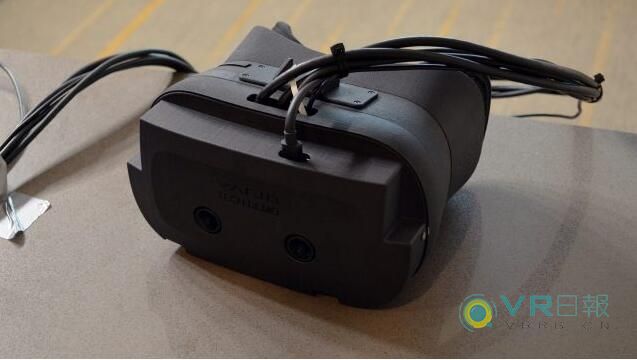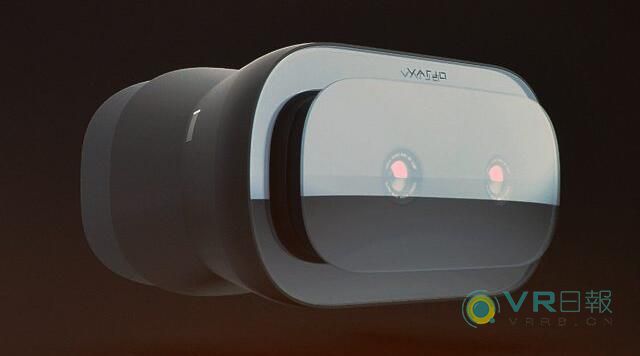"Bionic VR Head" Varjo Launches AR Perspective Components
Varjo's first-generation "bionic display" commercial VR headset will be available in the second half of this year, and the company announced plans to provide an attachment upgrade in 2019 to bring high quality AR fluoroscopy to the head. Varjo demonstrated the headed component features at AWE 2018 this week.
Taking into account Varjo's positioning (specifically for non-consumer domains), the company's goal for AR attachments is to maximize visual quality. As the current technology demonstration shows, it is equipped with a pair of 4K cameras, lens matching head shows its own about 95 degree field of view, supports 90Hz stereoscopic video. Varjo said that the latency of the perspective input is currently about 40 milliseconds, but they hope to achieve a single digit delay before the annex is officially launched.

This AR technology demonstration head is exactly the same as the current Varjo Beta heading, with the addition of an AR attachment. When experiencing, you will notice some noise in the low lighting environment of the demo space. Despite this, from a visual quality point of view, Varjo achieved the best perspective AR I have ever seen. I saw the view of the real room inside the head display, and the full-size virtual motorcycle model was projected in space. In view of the unique illustration of the head display, the center of the field of view shows the clear details of the motorcycle. Compared with optically transparent AR heads, Varjo's real world field of view and virtual content field of view are very wide and immersive.

The short presentations seen are purely visual experiences and lack of interaction. Varjo does not talk about the advanced features that people expect from the perspective AR system, such as manual tracking or SLAM. Although Varjo's goal is clearly to provide high-quality visual effects in AR attachments, it is not clear how many input/interaction pipelines they plan to provide.
Varjo has released a video for demonstrating AR see-through attachments, but the first thing to note is: The company stated that the video was "completely recorded in real time via Varjo's (AR) prototype," but this may be misleading because video It is not recorded through the head lens. Instead, they seem to have recorded the input from the heads-out and used a cropped portion that represents the input segment of the head-mounted central focus display. In simple terms: This is a direct video input, rather than shooting through the head-up lens. The part you see only represents the small area high resolution view in the center of the head-up field of view.
In addition, what they present is real-time rendering. Varjo also stated that their software is interpreting the scene's real-world lighting, allowing the virtual component to cast convincing shadows onto the real ground, and supporting the virtual object to reflect the elements of the real scene (at the end of the video, the surface reflection of the ground is actually Virtual Image).

Perspective AR has advantages and disadvantages compared to transparent AR. First, the world's enhancements will appear to be more realistic because the pixels are drawn directly on the real-world image, eliminating the appearance of a translucent "hologram" on a transparent AR display (because for transparent displays, creation can be Masking 100% of the world's outer light is extremely difficult. For the moment, it is easier to achieve an immersive wide field of view than through transparent AR.
On the other hand, our eyes have excellent resolution and contrast, which usually means that we limit our dynamic range (the ability to see the dark and light areas of the scene at the same time), and the visual fidelity when using perspective AR (Not to mention the delay that this may bring).
PCB Spring Terminal Block Section
PCB Spring Terminal Block
It is a new type of terminal block with spring device, which has been widely used in the world's electrical and electronic engineering industry: lighting, elevator lifting control, instruments, power supply, chemistry and automobile power, etc.
Spring type terminal block
Spring type PCB terminal, the connection mode is divided into cage spring connection and butterfly spring connection, which is fast and convenient for wiring and improves the operation efficiency.
It can be used to connect all types of conductors with cross-section of 0.2mm to 16mm, with spacing of 2.5mm-15.0mm.
PCB Spring Terminal Block
ShenZhen Antenk Electronics Co,Ltd , https://www.antenkelec.com